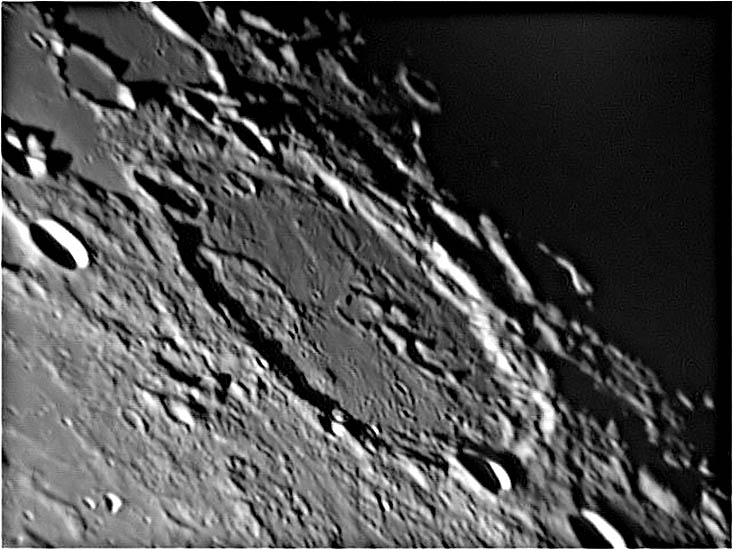
image by Zac Pujic
There are many lunar craters that I have never seen really well, both at the telescope and in Earth-based images. Messala is one of them, but now I can cross it off my list, for Zac’s image shows detail I never knew existed. Messala is a large (124 km) older crater with a somewhat ragged rim and complex floor. I am not certain if the off-center hills are central peaks (I doubt it), but the floor has been shallowed by some fill material so that the original peaks may be buried. Part of the fill may be ejecta from the nearby Crisium and Humboldtianum impact basins (the roughness on the floor), but smoother parts of the floor suggest that volcanic deposits may have helped fill the crater too. Other features consistent with volcanism include the possible dome (just inside the bottom left rim and being studied by GLR), rilles just hinted at near the top left, and dark pyroclastic deposits seen on high sun images on the northern (top) portion the floor. It would not be surprising that volcanic eruption might have occurred inside Messala because the entire area seems marshy with the nearby Lacus Spei and smooth plains in Schumacher and elsewhere. In fact, look closely at Schumacher - there seems to be a rough textured dome hugging its S-SE rim. This is a fascinating area that needs to be further explored in high resolution, under high and low angles of illumination.
This is one of the lost LOPDs originally published June 15, 2005.
Technical Details:
31 cm Newtonian reflector + eyepiece projection to give f/28 + Phillips ToUCam Pro II webcam in black/white mode.
Related Links:
Rükl plate 16
Zac’s website
SUPPORT LPOD - VISIT A SPONSOR (CLICK AN AD BELOW)!
Now you can support LPOD when you buy any book from Amazon thru LPOD!
COMMENTS?
Click on this icon File:PostIcon.jpg at the upper right to post a comment.



